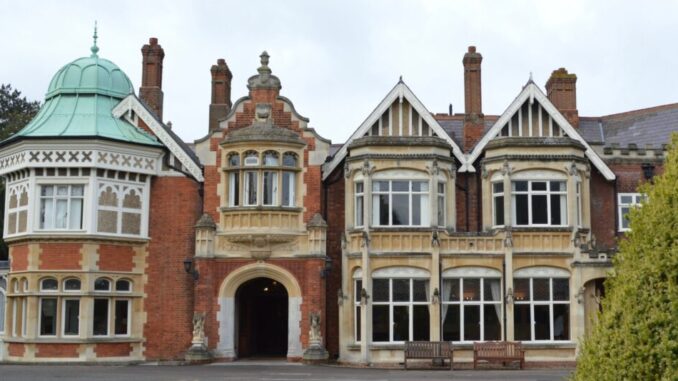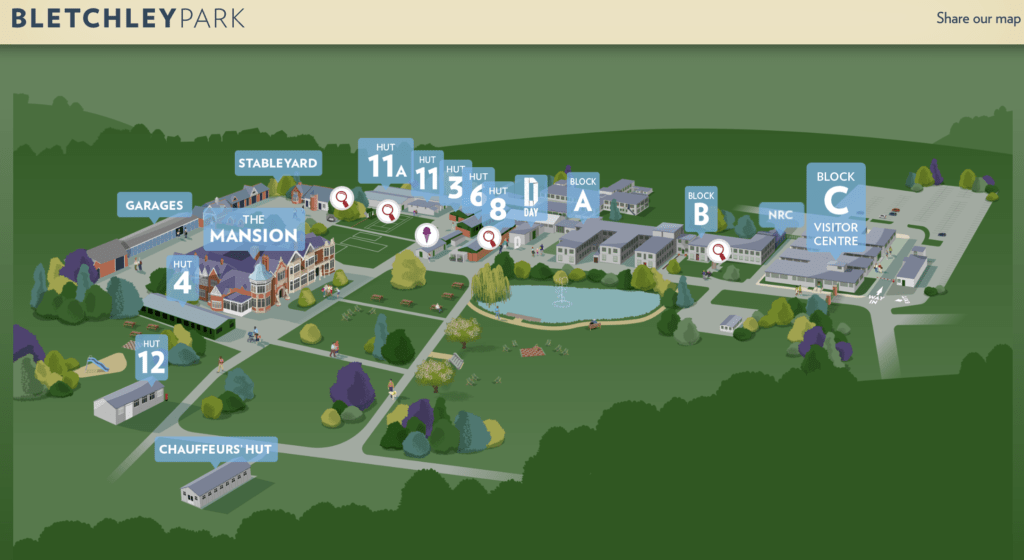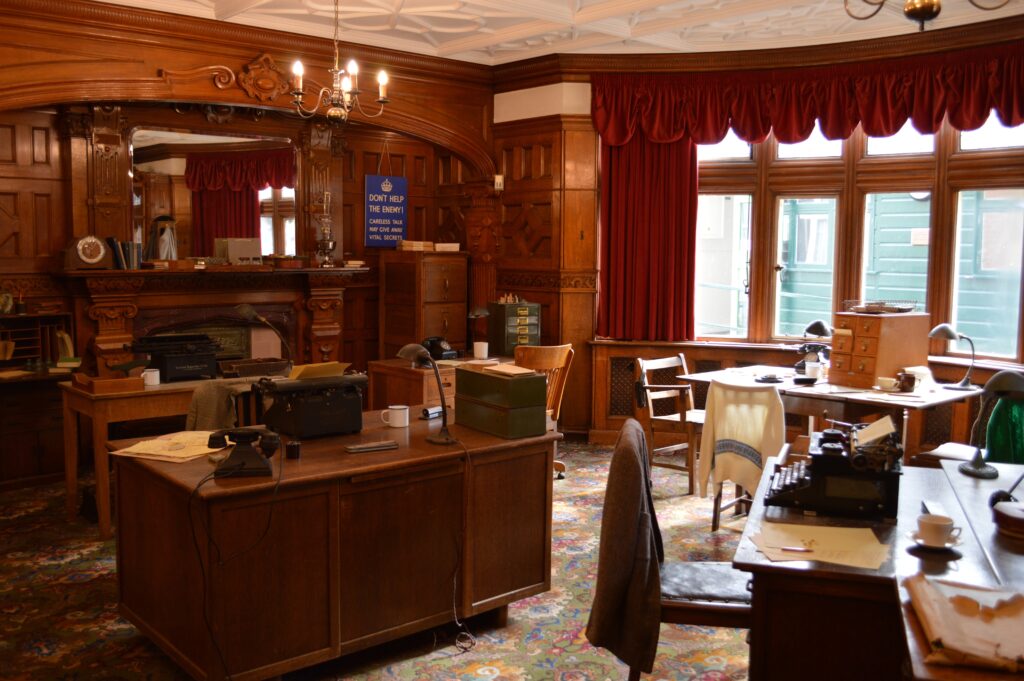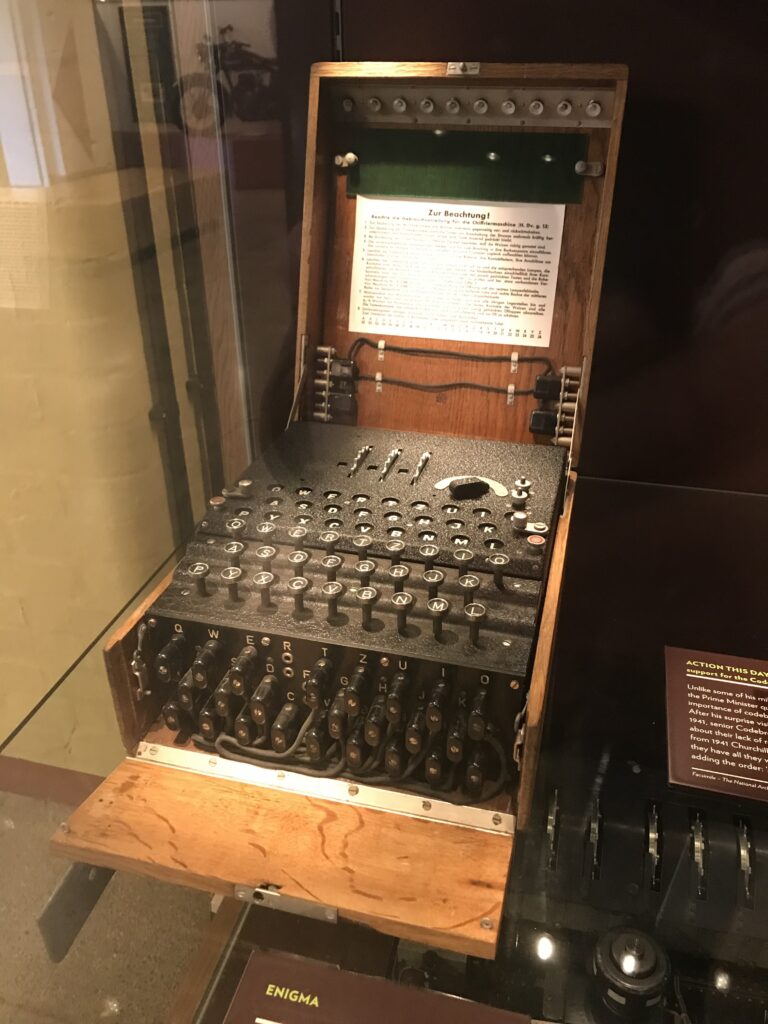
Less than 40 minutes on the fast service from Euston gets you to Bletchley (now part of Milton Keynes). It is a journey that would have been taken by many thousands of service personnel and others in WW2 because (literally) over the road from the railway station is Bletchley Park – the wartime home of the codebreakers of the Government Code and Cypher School.
Saved from being levelled by developers in the 1990s, the site is now a museum, one that us growing with each year as new funding allows the Bletchley Park Trust to restore more buildings and add new displays.
For anyone interested in the history of WW2 this is a ‘must visit’ destination. It is here that the German ‘Enigma’ and (lesser-known, but perhaps more important) ‘Lorenz’ encryption systems were broken, as well as other Nazi cyphers and those of the Italians, Japanese and others. So important was the work done here that some historians credit Bletchley with shortening the war by anything up to two years. The information generated was vital during the Battle of Britain, disrupted German convoys supplying Rommel’s Afrika Korps, aided the victory against the Italian navy at the battle of Cape Matapan – in fact, in every theatre of war, Bletchley’s involvement was important or decisive.
One of the most significant of these theatres is featured in permanent display. D-Day: Interception, Intelligence, Invasion shows how the codebreakers provided, in Eisenhower’s words, “priceless” information which “saved thousands of British and American lives and, in no small way, contributed to the speed with which the enemy was routed and eventually forced to surrender.”
You can walk through the huts used by the codebreakers in the early years of the war, learn about the early days at the site in the original Victorian mansion on the Bletchley Park estate, and see the growth of ‘BP’ after 1941 when the workforce rose from about 2,500 to close to 10,000 people.
Because that is the key thing about Bletchley, it was codebreaking on an industrial scale. If you’ve seen the movie ‘The Imitation Game’, with Benedict Cumberbatch as the mathematician Alan Turing, you might have come away with the thought that this was an ramshackle operation, peopled by eccentric geniuses, and run in an archetypically British amateur way. It was, in fact, a triumph of efficiency and organisation – those eccentric geniuses existed, but within a hugely effective structure, dedicated to processing, prioritising, decrypting and analysing vast amounts of intercepted German signals traffic.
It was also as secret as it could possibly be, its success dependent on the Germans not knowing that their supposedly secure messages were being read, but it was that secrecy that was almost the site’s undoing. At the war’s end the codebreakers left (the GC+CS morphing into today’s GCHQ), but their role in the conflict would remain a secret until the late 1980s. By that time part of the park had been sold, the wartime buildings demolished and a housing estate built. The remainder of the site was about to go the same way until a preservation order was issued.
Since then the Trust has restored the (hugely dilapidated) original buildings, and continue to restore and add. It is a salutary thought though, that we came this close to losing a place of world historical significance.
This is a fine day out from London – allow at least three hours for a visit, more if you’re a WW2 history buff. There are excellent free tours by volunteers, an informative audio guide, a couple of cafes, and much audio-visual and hands-on displays. For me, though, what makes it truly memorable is that sense of being in the place where history was made. As the scene-setting film at the entrance says, “this is Bletchley Park. This is where it happened.”.
On the same campus, but with a separate entrance and fee (there is some beef from the 1990s that has never been resolved) is the National Museum of Computing where, amongst many other technological treasures, one can see reconstructions of a couple of the machines used by the codebreakers, Turing’s ‘Bombe’ and the world’s first semi-programmable electronic computer, Tommy Flowers’ ‘Colossus’, that was used to attack the German Lorenz cypher system.
A couple of months ago I did an online talk about the history of Bletchley Park, which you can see below (or on YouTube).
The Bletchley Park site has all the information you need about tickets, opening times etc, as well as a very good podcast.
![]() And here’s a small selection of the books about Bletchley, for those of you who would like to read more.
And here’s a small selection of the books about Bletchley, for those of you who would like to read more.
- The Secret Life of Bletchley Park
- Bletchley Park: The Code-breakers of Station X
- The Codebreakers of Bletchley Park



